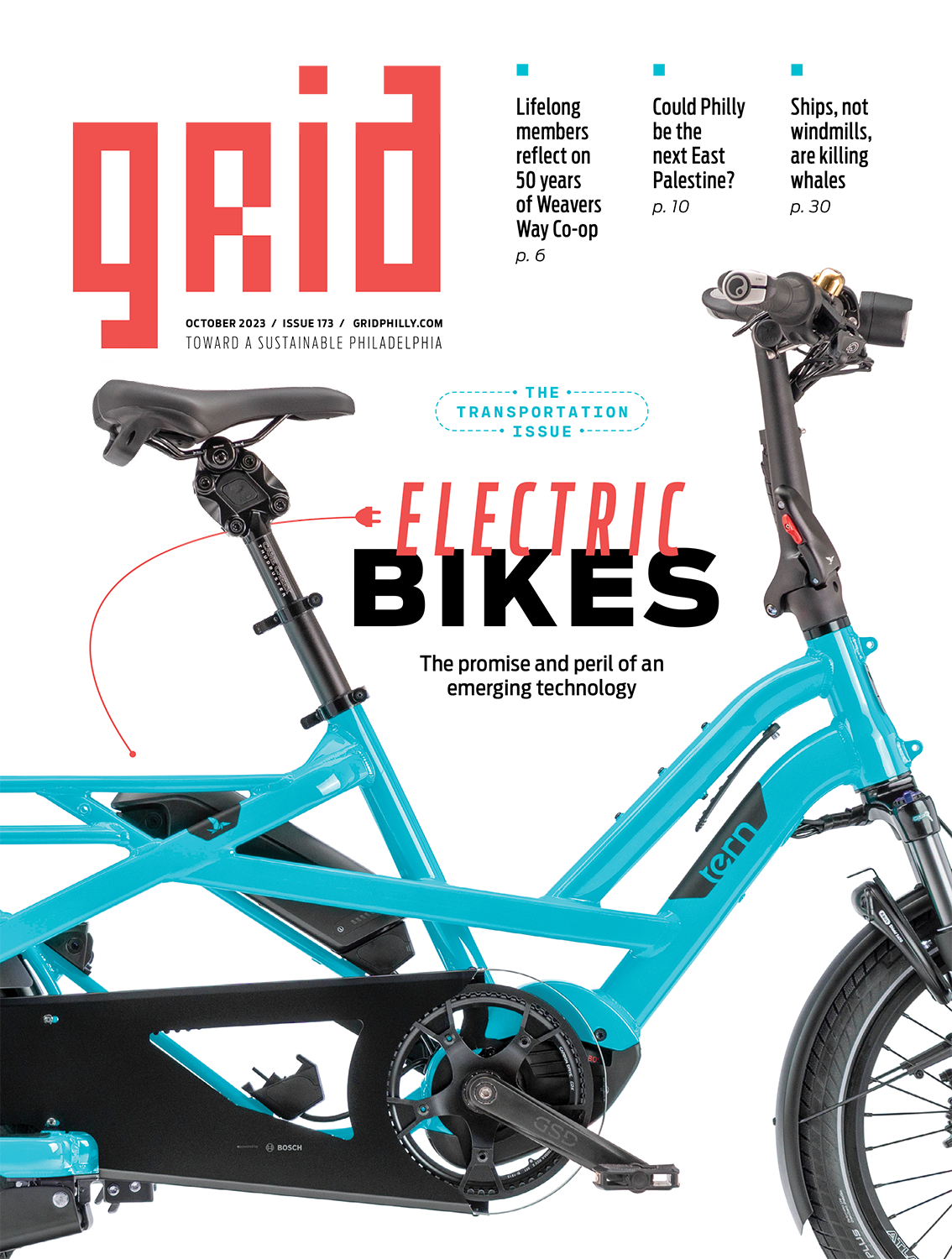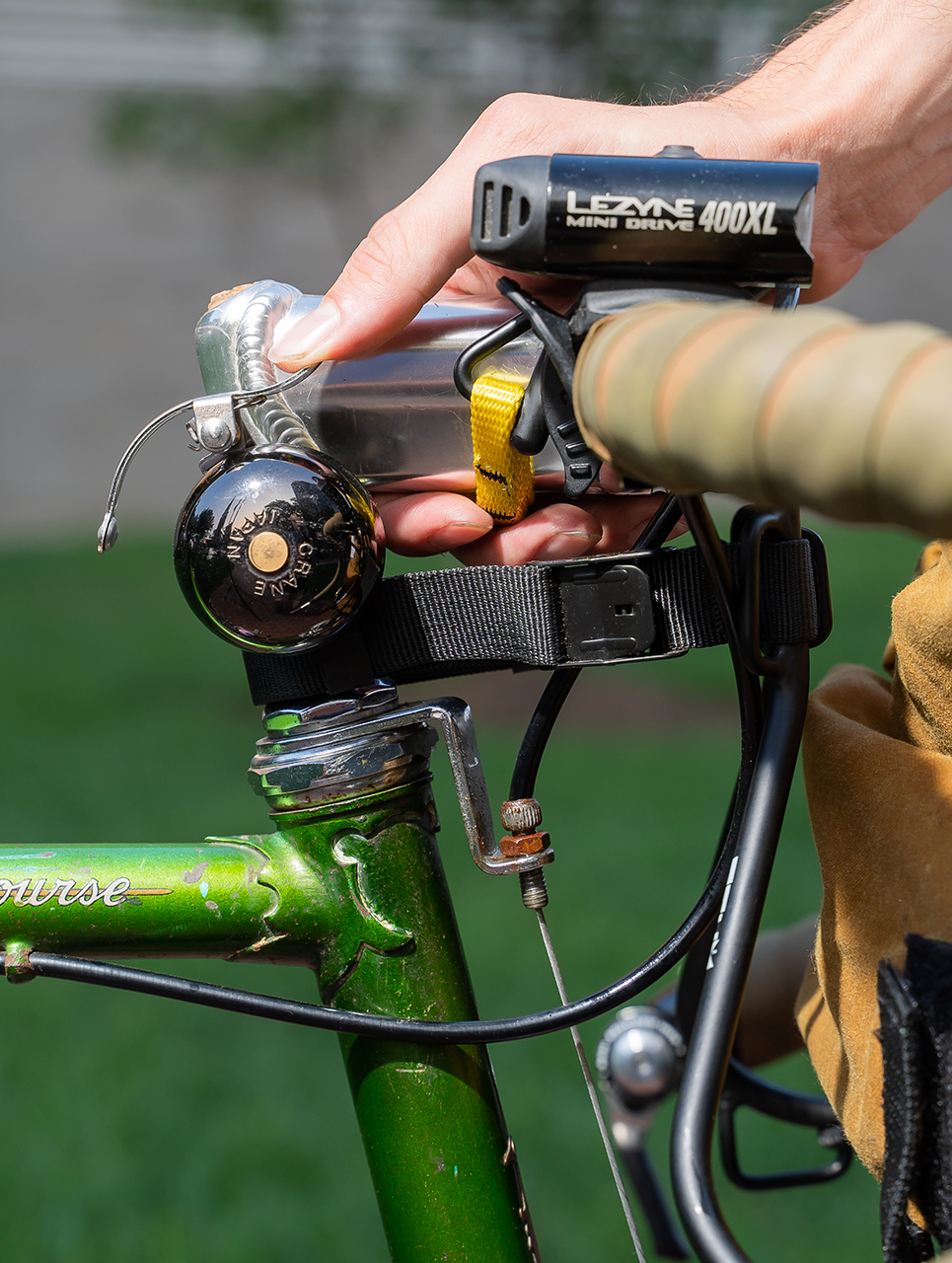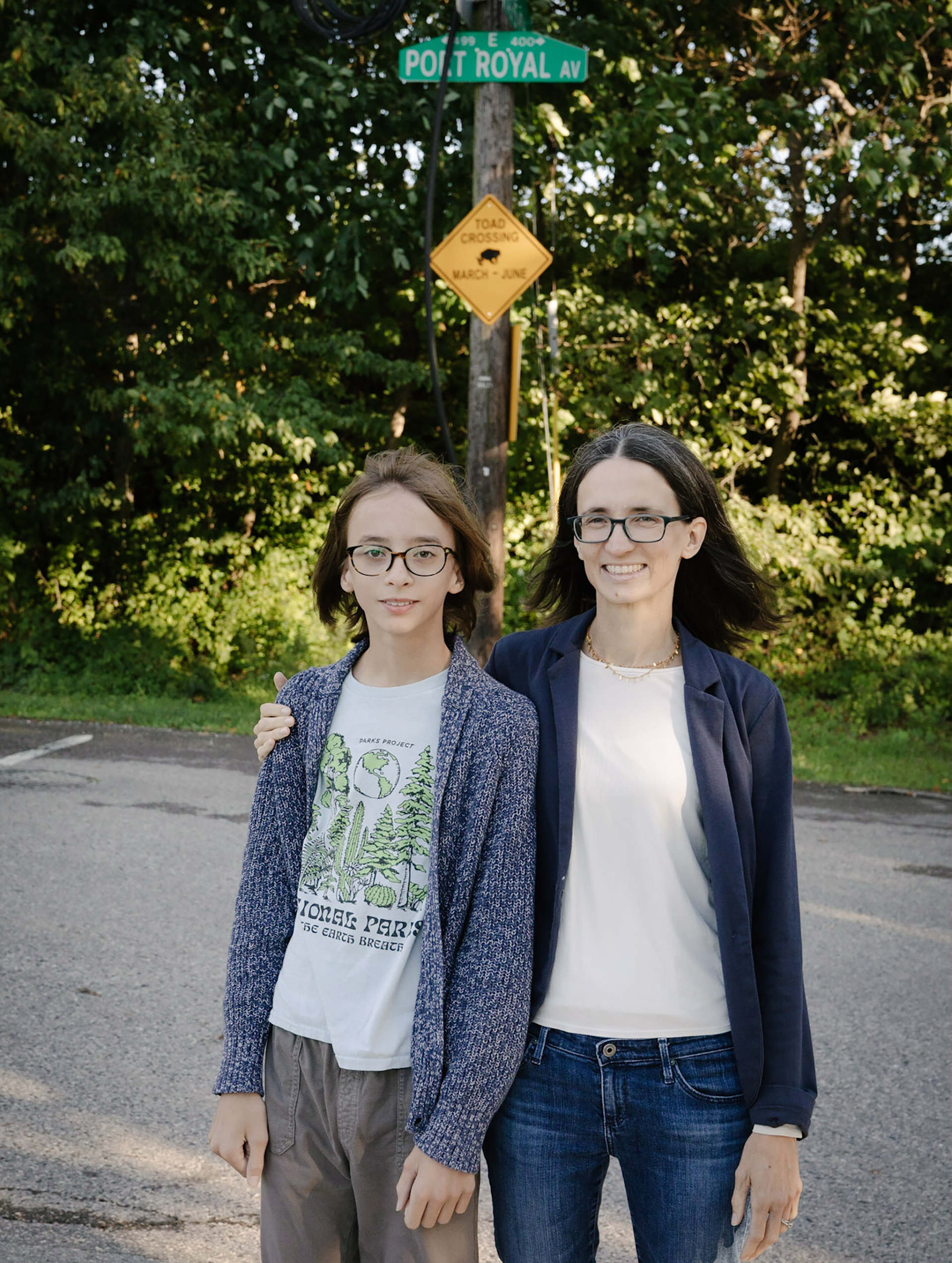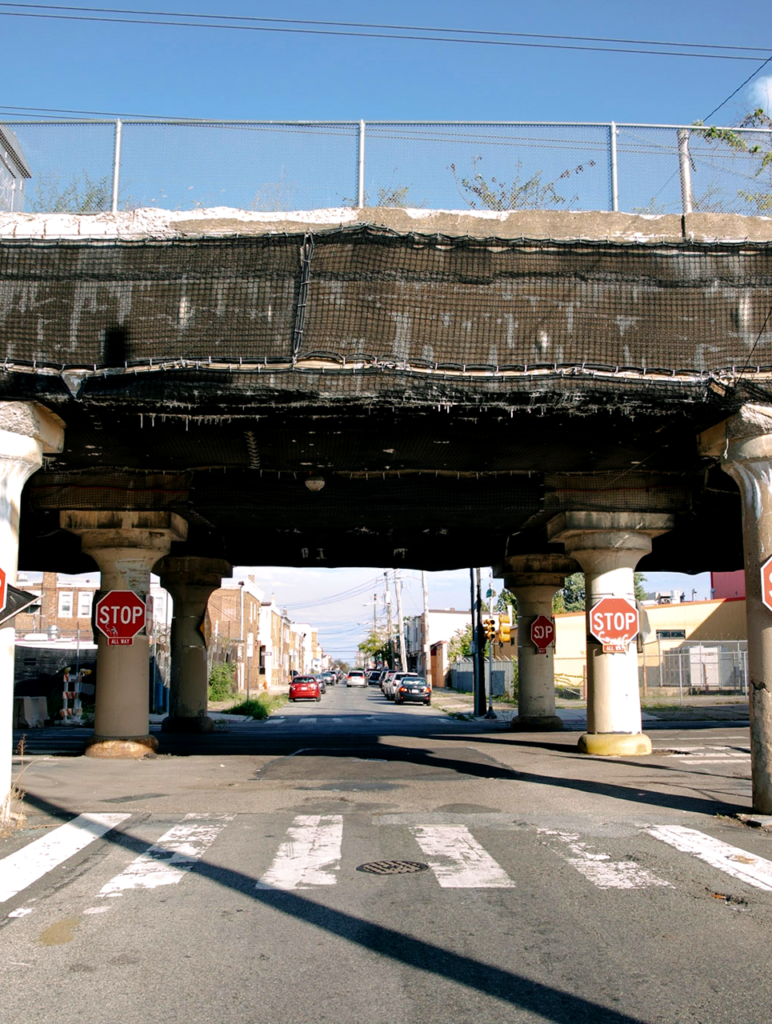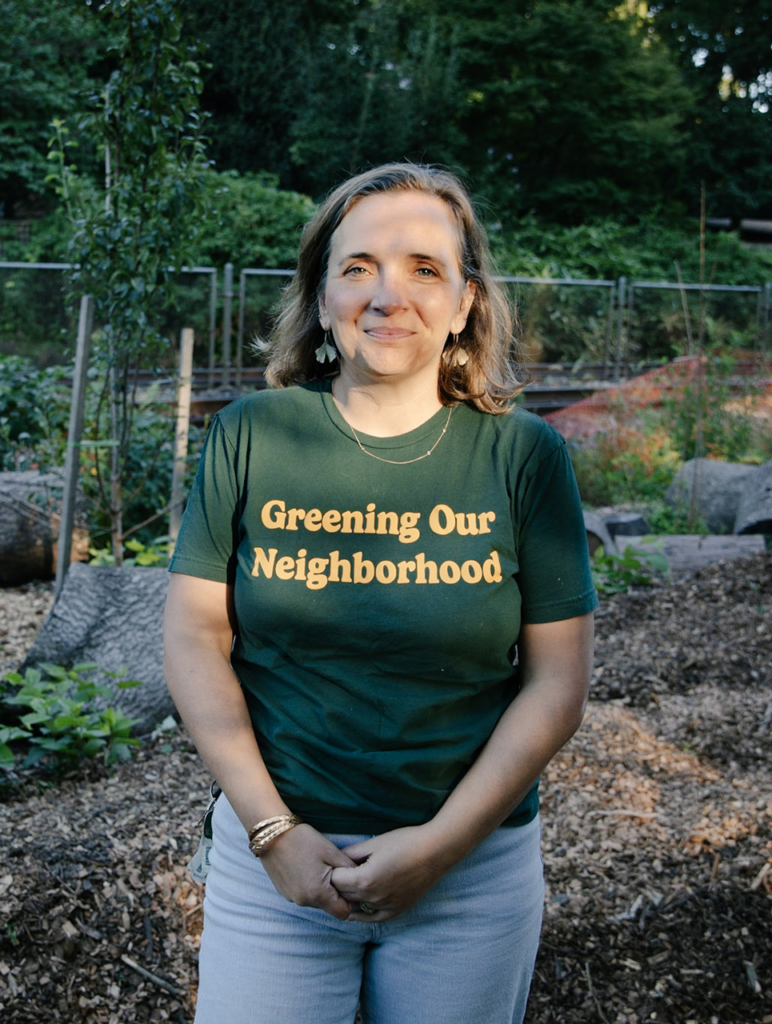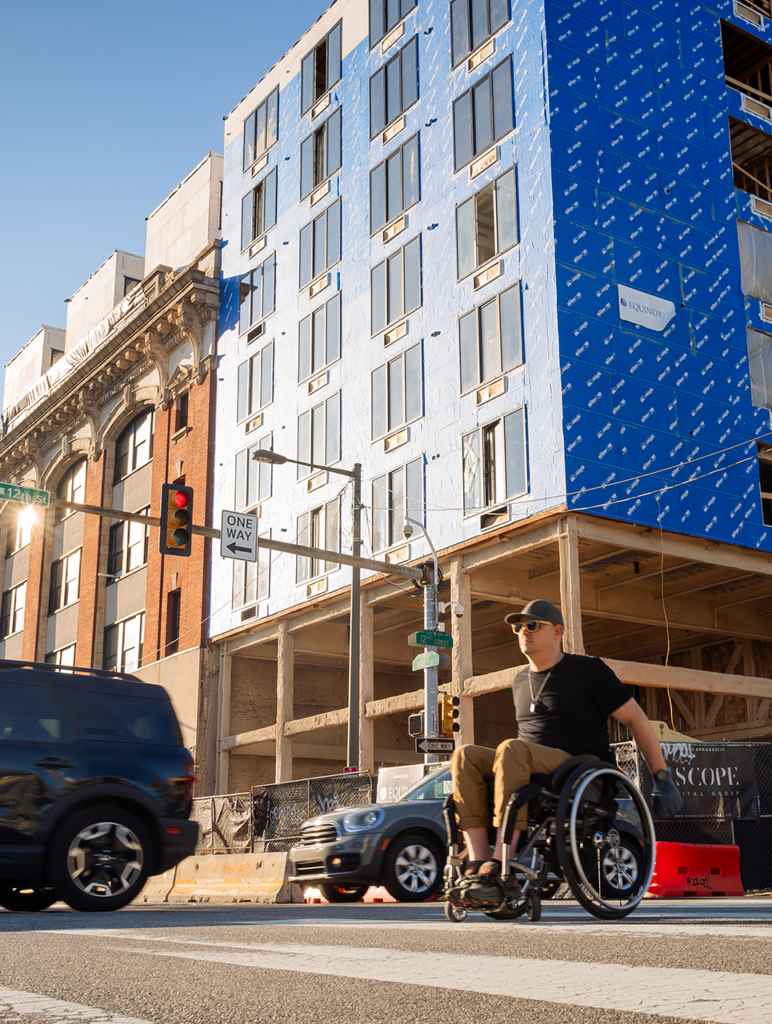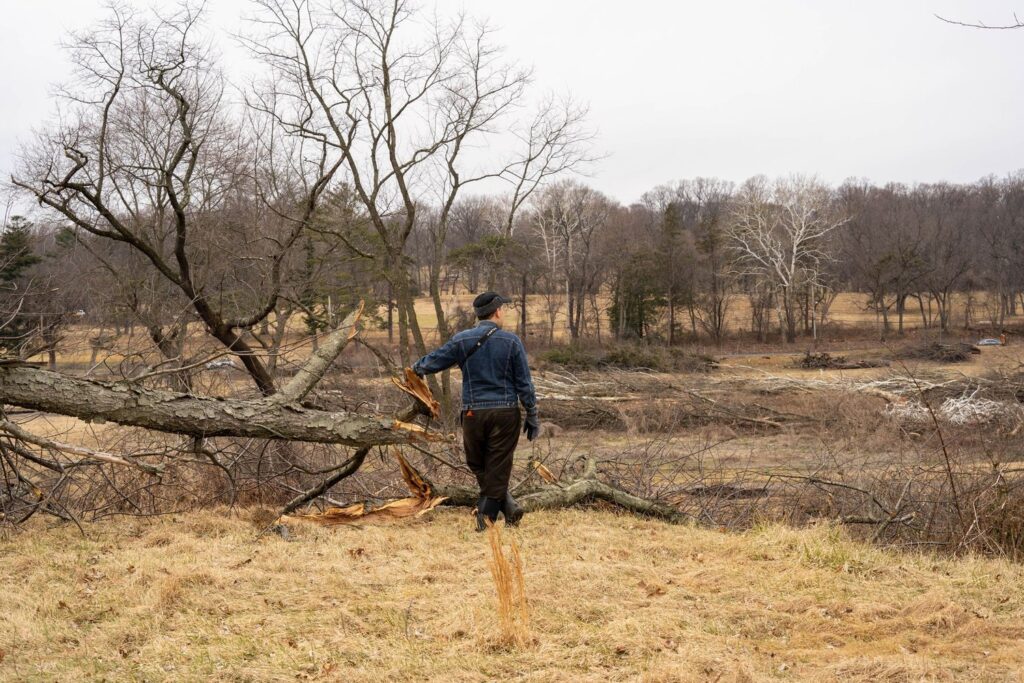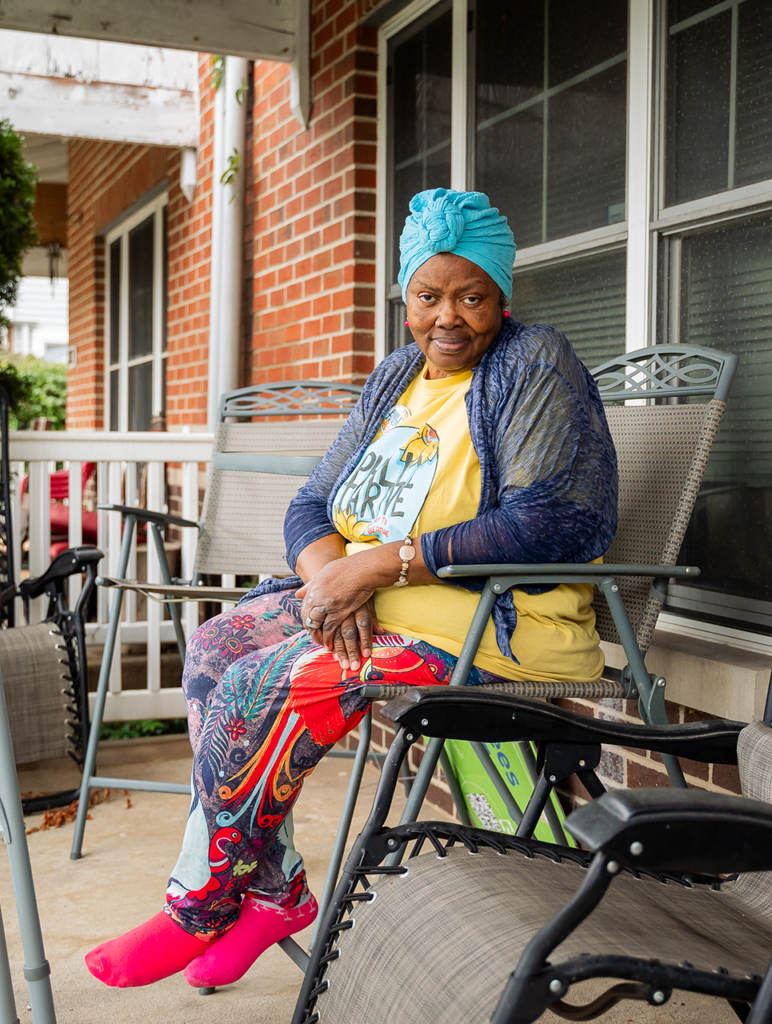Last fall, I was cruising down a street in Mount Airy on my new electric bike, joyfully accelerating into the wind and relishing in emission-free transportation, when suddenly it hit me.
The pavement, that is.
An SUV facing the wrong way on the two-lane road jumped out from a line of parked cars in front of me, apparently without looking. I applied the brakes, but the distance wasn’t adequate. In a split second, I made the decision to crumple to the street rather than slam into the moving vehicle.
Fortunately for me, the vehicle stopped before it struck me and I escaped without serious injury. It was lucky for the driver, too, who got out of the vehicle, took one look at the jumbled mess of human and bicycle in front of her, and exclaimed, “Oh Lord, I don’t need this!”
Yeah, who does?
In the year-plus since I began e-biking, I’ve quickly come to appreciate both its benefits and challenges.
On one hand, e-bikes convert more ‘nah, I’d rather just drive’ decisions into ‘yeah, I can do that on my e-bike.’ Depending on a few variables, they get the cost equivalency of thousands of miles per gallon compared to a gas-powered car. Thus, they’re a great tool for combating greenhouse gas emissions from the transportation sector, the largest emitter in the United States.
On the other hand, e-bikes are a “monstrosity,” as an article in The Atlantic bluntly put it last year. And it’s true, at least in the Frankenstein sense: the combination of old-school frame and superhuman speed and power leaves them not quite bicycle and not quite automotive. Safety statistics are hard to come by, but the available evidence seems to point toward danger. One Dutch study found e-bike riders are 1.6 times more likely to end up in an emergency room than those on regular bikes. Suffice to say that taking an activity like bicycling, unfortunately already perilous, and increasing the speed is going to create problems.
So the question is: are e-bikes a net good or bad? Chris Puchalsky, director of policy and strategic initiatives in Philadelphia’s Office of Transportation, Infrastructure and Sustainability, thinks that’s ultimately up to … well, everyone.
“But I think good or bad depends a lot on how we implement them,” Puchalsky said. “And by we, I mean society as a whole, and not just the city.”
Several years after e-bikes burst onto the transportation scene during the pandemic, Puchalsky’s nuanced point of view appears prevalent. Through interviews with bicycling advocates, transportation planners and industry experts, one can begin to see the blurry outlines of a path to take the technology from problem child to a mature adult.
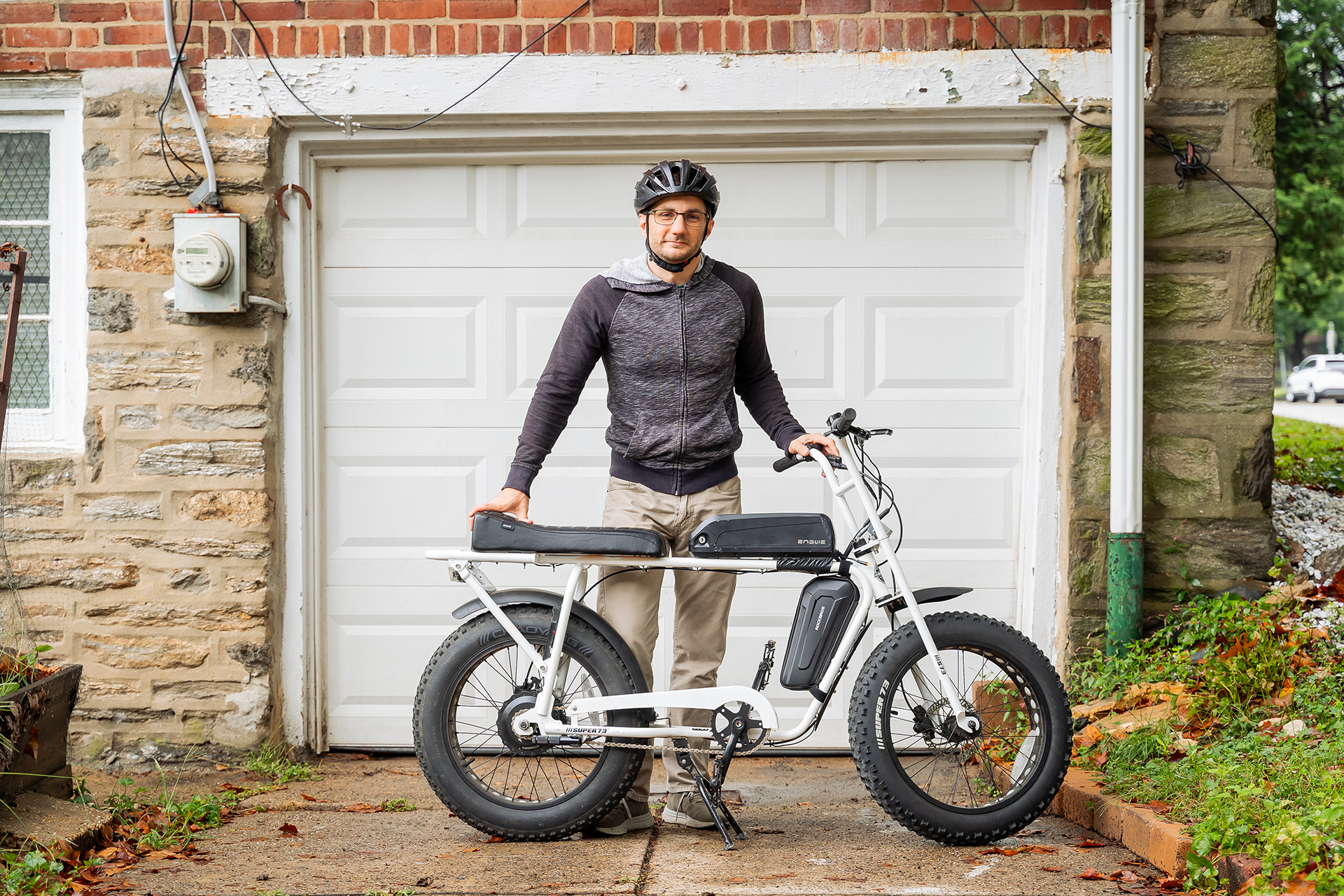
The “pro” column
According to the U.S. Department of Energy, nearly 60% of all vehicle trips in the U.S. traverse six miles or less. Considering e-bikes typically have ranges of 20-40 miles per charge, that statistic is encouraging for those looking to decrease the number of cars on the road.
Sure, there’s a certain breed of traditional cyclist that’ll gladly do six miles on a regular bike — both ways, rain or shine — and think nothing of it. A Portland State University study found only about 7% of Americans fit into that die-hard category. Another 5% say they’ll usually bike given existing transportation infrastructure. Another 37% say they’ll never bike on the road, no way no how.
Then there’s the silent, non-biking majority: more than 51% of people are “interested but concerned.” Among the reasons listed for not biking were requiring a car for work or school, having to travel too far, too few bike lanes and trails, and traffic.
“They’re willing to bike, but they don’t feel comfortable,” Puchalsky observes.
Those problems speak to me, and my e-bike solves several of them. Multiple times a week, I try to get to a gym located two miles away and a part-time job that’s about three-and-half miles. Given the hilly terrain of Northwest Philly, busyness of the roads, and especially the summer heat, I often think twice about a commute on my regular old three-speed. But the power of my e-bike, which tops out at 20 mph and conquers hills with ease, makes it very doable and even joyful.
William Telegadis, founder of Whitemarsh Revolutionary Cycles, a small e-bike business in Montgomery County, says this feeling of freedom and mobility is a major selling point. While several years ago most of his customers were niche recreationalists, these days most conversations with would-be buyers revolve around their commute.
A lot more bikes are augmenting or replacing a car.”
— William Telegadis, owner of Whitemarsh Revolutionary
“It’s that customer that comes in with a very specific range that they have to go and the terrain they have to ride to get to work, and then we back into the mileage on the battery and the budget they can afford,” Telegadis says. “A lot more bikes are augmenting or replacing a car.”
Puchalsky thinks e-bikes used for such purposes fit directly into Philadelphia’s long-term transportation and sustainability goals — which seems essential, as e-bike use is on the rise. According to industry groups, e-bike sales reached 900,000 in 2021, double the year prior, and sales revenue grew another 33% the following year.
“We see trends that more people use them and they take longer trips with e-bikes than they would otherwise,” Puchalsky says. “Even if only some of them displace driving, there’s going to be a net positive impact.”
E-bikes also present major equity benefits. Indego, the bike sharing program that stations bicycles throughout the city, began adding e-bikes to its fleet in 2018 and now operates about 1,000, Puchalsky says. The e-bikes dovetail with a separate Indego effort to provide more stations in predominantly Black and Brown and lower income neighborhoods.
The results look good. A 2022 study from Rutgers University showed that “e-bikes increase the overall usage of Indego,” and concluded that “ integration of e-bikes was successful in promoting bike sharing usage in disadvantaged areas,” including for commuting and daily errands.
Shawn Megill Legendre, manager of the Regional Trails Program at the Delaware Valley Regional Planning Commission (DVRPC), says he believes e-bikes can provide a similar range of benefits across a planned network of 800 miles of trails in the city and its suburbs.
“When we look at e-bikes, we do believe they help,” Megill Legendre said. “Addressing the climate crisis, expanding accessibility and being another way people can get around.”

The “no” column
In late July, The New York Times served up the latest in a series of troubling media reports on the dangers of e-bikes, reporting that the California beach town of Encinitas declared a public emergency after two teenagers riding e-bikes collided with cars in separate incidents just days apart. One, a 15-year-old on his way to shot-putting practice, died.
Even as he’s making his living selling e-bikes, Telegadis doesn’t sugarcoat the realities. He speaks openly about the darker side of the industry, where online influencers hide the dangers of e-bikes during their reviews and fly-by-night companies ship questionable products, including chargers and batteries that can present major safety hazards, especially if the battery and its lithium-ion cells are damaged.
“The second that all the cells are full, the ones that are damaged are overflowing with current and they’ll basically burst,” Telegadis said. “They go to plug the charger in at night and it becomes a bomb.”
As The New York Times reported, malfunctioning e-bike batteries have caused more than 100 fires this year.
Telegadis also points out that there is a dramatic difference between a Class I e-bike with no throttle and a top speed of 15-20 mph and a souped-up one with a 750-watt motor and a built-in speed limiter that can be neutered with the clip of a wire, allowing a teenager to hurtle down the street at highway speeds.
Making matters worse, many products today follow a direct-to-consumer model, with questionable companies popping up and selling sleek-looking but cheaply built models, then disappearing when problems arise.
“The bike gets bought and gets home, and the person takes it to Valley Forge for the first time and everything breaks,” Telegadis said.
These problems lend a Wild West feeling to e-bikes, which further compounds the problems. Issues of liability (who could get sued in the event of an accident) and insurance (whether or not auto policies will cover accidents) are still open questions. When I first encountered a simple maintenance issue on my e-bike — brake pads and a new tire — the local bike shop where I take my regular three-speed turned me away due to fear of liability. I told them it had nothing to do with the battery or motor, but they still said no: We just won’t touch them.
There are also cultural challenges, which may be thorniest of all. Anyone who’s cycled down a Philadelphia roadway knows motorists often don’t play nice with cyclists. But riders of e-bikes can get grief from both ends. Even still, Nicole Brunet, policy director of the Bicycle Coalition of Greater Philadelphia, thinks that’s changing for the better, at least in the bicycling community.
Those who just want more people to be on bikes are very excited.”
— Nicole Brunet, Bicycle Coalition of Greater Philadelphia
“It’s mixed. There’s definitely a community of recreational cyclists that are never going to get an e-bike,” Brunet said. “But those who just want more people to be on bikes are very excited.”
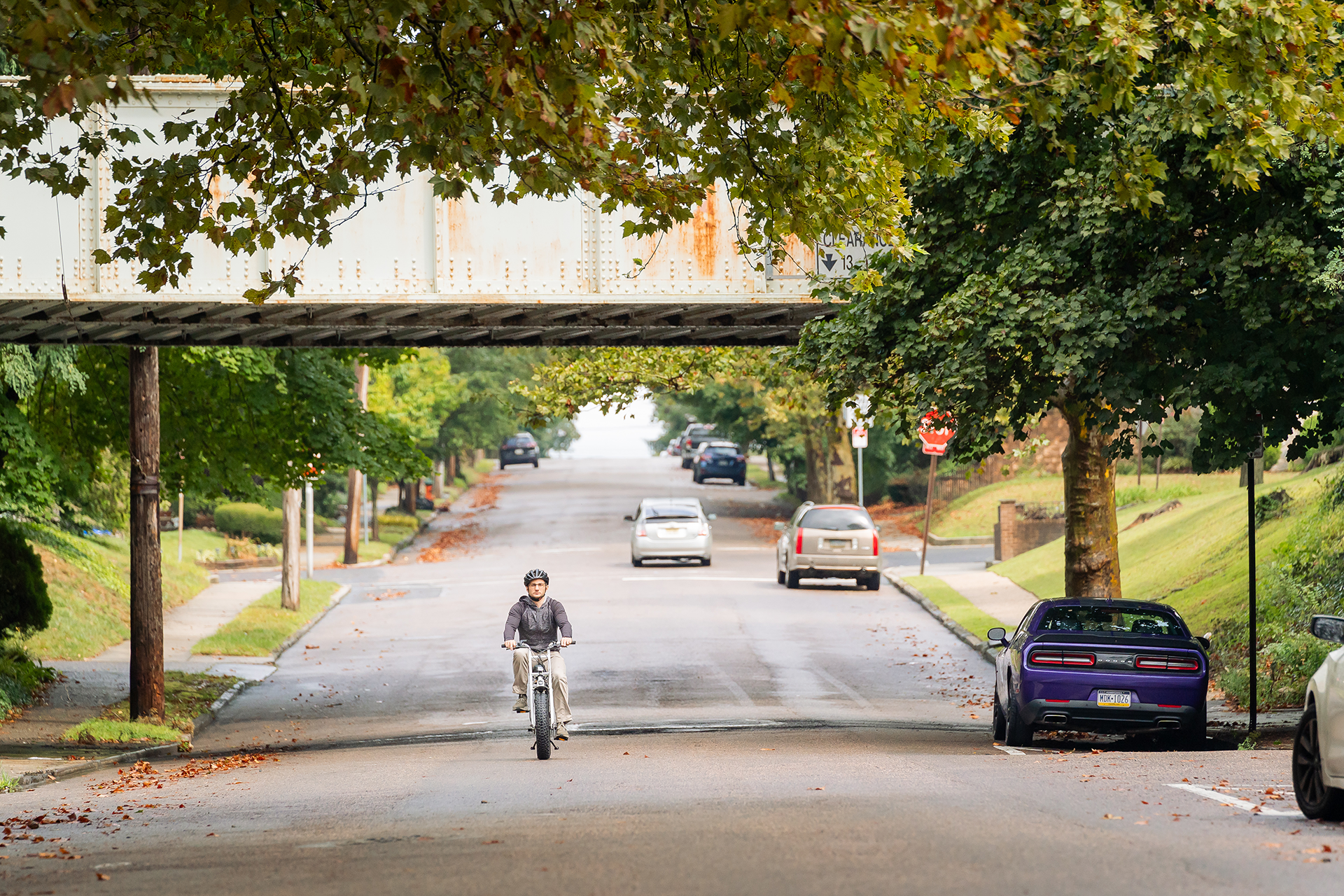
A better way
Is this frustrating clash of high potential and serious danger doomed to be the e-bike status quo forever? Or can the mode of transportation be better integrated into our systems?
Optimistic advocates point upstream. State and federal lawmakers, they say, can act to get a better hold on the industry, regulating products and business models for both safety purposes and to create uniformity for local and county officials.
Puchalsky would like to see Class I and Class II e-bikes get preferential treatment over Class III. The lower two classes provide many of the mobility benefits without reaching speeds that make them something more akin to a regular motor vehicle, Puchalsky says. And it appears Pennsylvania lawmakers agree; in 2014, they passed a law that — via a 20 mph capable speed limit — effectively makes Class III bikes illegal on Pennsylvania roadways.
Brunet agrees there’s a need for regulation, but notes the Coalition believes the state’s laws are outdated and advocates for a 15-mph limit on state trails.
At the federal level, Telegadis believes requiring bikes to integrate technology that automatically cuts off motor power when the brakes are engaged and quality certifications for chargers and batteries will go a long way toward making e-bikes safer.
But advocates also agree local governments have a huge role to play. And the gold standard more or less remains what it is for regular bicycles: protected bike lanes. That way, no matter what lawmakers do or don’t do, riders can have added security.
Megill Legendre with the DVRPC says the Circuit Trail initiative currently offers 381 miles of bike trails around the region and prioritizes protected trails wide enough to accommodate e-bikes, regular bikes and pedestrians alike. The commission is also planning a workshop this fall, inviting local officials from around the region to learn more about “micromobility” devices such as e-bikes and scooters.
In Philly, Puchalsky says the goal is creating 40 or more miles of barrier protected bike lanes by 2025, and that the City is well on its way to finding funding to make that a reality.
Brunet agrees that’s a noble objective, but says the program is bottlenecked by the budget for road paving, which typically co-occurs with the installation of bike lanes. Finding more political support to increase the budget, along with policy solutions like enforcing laws against double parking and automated speed enforcement, could help traditional cyclists and e-bike riders alike.
Brunet holds out hope that a broader cultural change is possible. She points out that under the law, bicycles technically have the same rights as motor vehicles on most streets, regardless of the speed they’re traveling. Getting people everywhere to lower the perceived status of car as king of the road remains the ultimate goal.
“I do think we’re seeing a trend of more and more people using active transportation as their chosen way of getting around the city,” Brunet says. “If we expand protected spaces … [Philadelphia] is set up for the car being the lowest chosen way of getting around. I think we can do it.”


